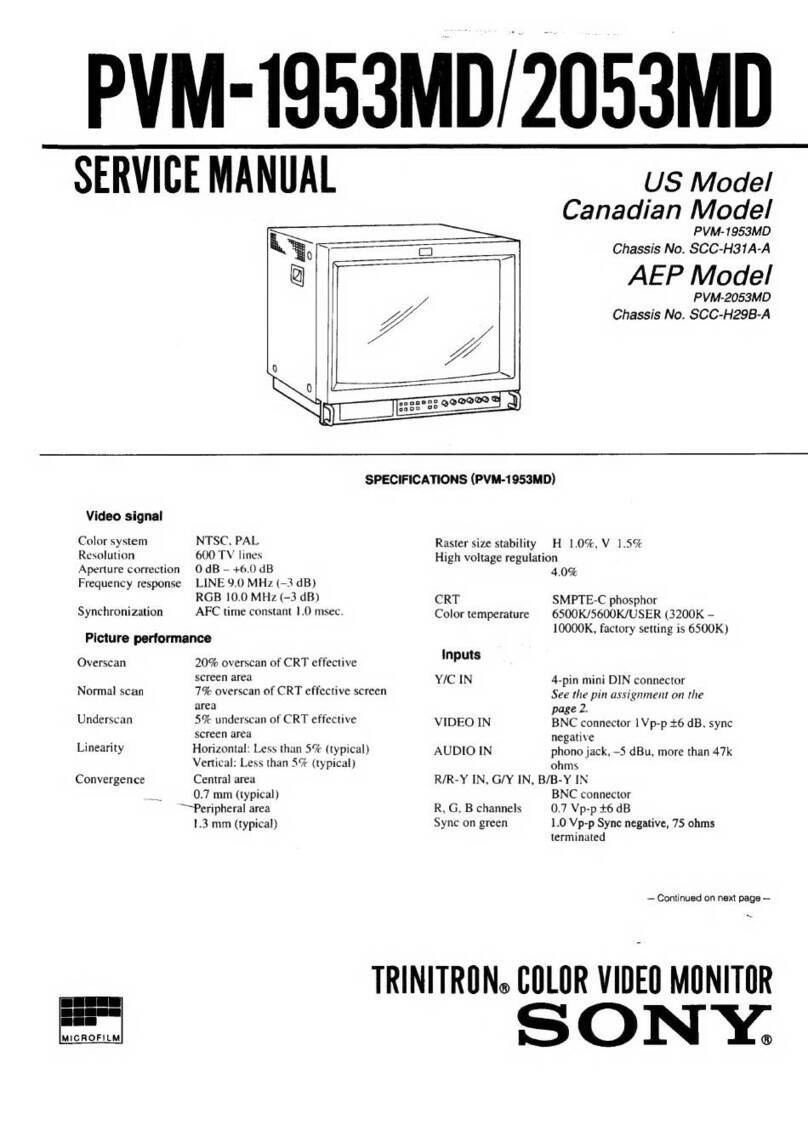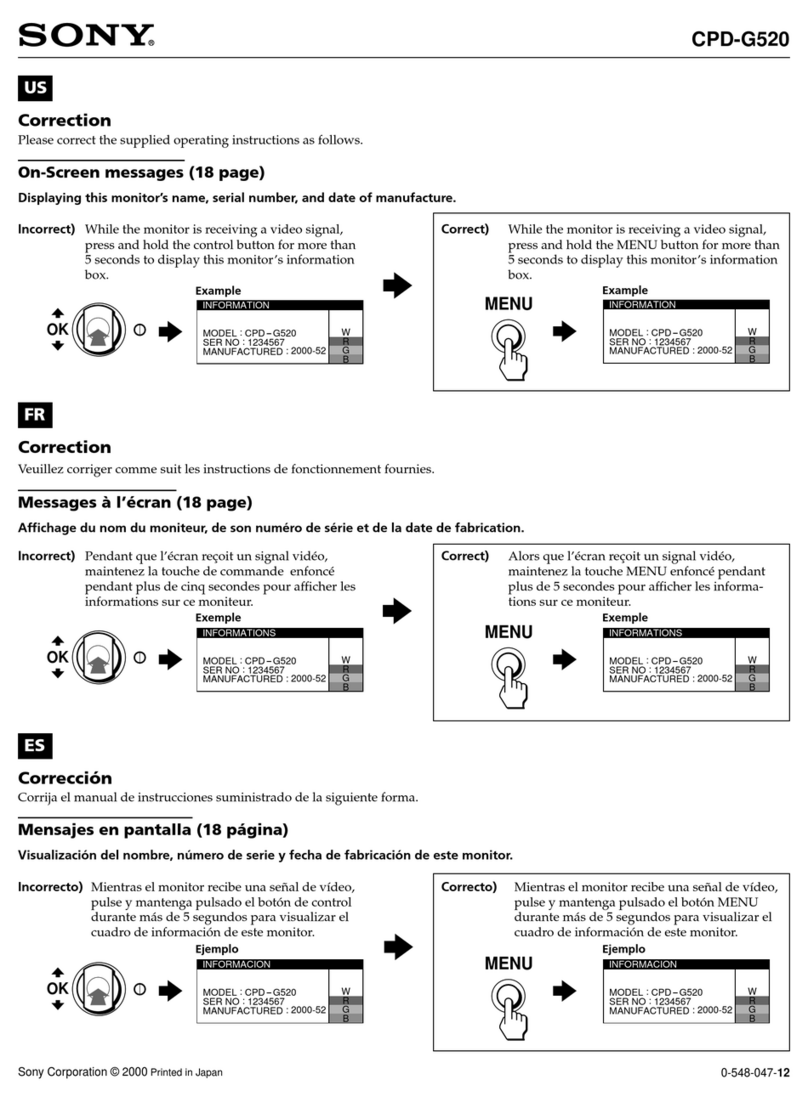Sony JumboTron LDU-1530S User manual
Other Sony Monitor manuals

Sony
Sony Trinitron GVM-1305TS User manual

Sony
Sony Trinitron BVM-A32E1WU User manual

Sony
Sony SDM-S81 User manual

Sony
Sony GDM-FW9011 User manual

Sony
Sony Trinitron PVM-1953MD User manual

Sony
Sony SDM-HS95B User manual

Sony
Sony Bravia FW-100BZ40J User manual

Sony
Sony Trinitron PVM-14N5A User manual

Sony
Sony Trinitron CPD-G420S User manual

Sony
Sony Trinitron PVM-20M4U User manual

Sony
Sony FD Trinitron HMD-A100/L User manual

Sony
Sony CPD-G520P Operating instructions

Sony
Sony TRINITRON PVM-D14L5A User manual

Sony
Sony CPD-20SF2T5 User manual

Sony
Sony SDM-HS75P/B User manual

Sony
Sony SDM-S204/B User manual

Sony
Sony FW-98BZ50L User manual

Sony
Sony PVM-9L1 User manual

Sony
Sony SDM-P82 User manual

Sony
Sony LUMA LMD-4420 User manual































